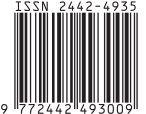PERAN AGEN REMINERALISASI PADA LESI KARIES DINI
Abstract
Remineralization is a natural repair process for caries lesions. It is now well-accepted that the primary modes of action of fluoride are enhancement of remineralization, inhibition of demineralization, and inhibition of plaque bacteria, with remineralization being the most important. This study to aimed to understanding the role of remineralization methods to alter mineral balance on management of non-invasive dental caries. Calcium and phosphate delivery can be enhanced to improve remineralization, especially in persons with reduced salivary function. There is a great need for improved and novel remineralization methods to alter the caries balance for the better, especially in individuals with a high cariogenic bacterial challenge. There was also influence of fluoride and carbonate on the remineralization process. Dentinal tubules were occluded by apatite crystallites is a feature also shared by transparent dentin beneath caries lesions and age-induced transparent dentin. It is based on unstabilized amorphous calcium phosphate (ACP), where a calcium salt and a phosphate salt are delivered intra-orally or delivered in a product with a low water activity. As the salts mix with saliva, they dissolve, releasing calcium and phosphate ions. The mixing of calcium ions with phosphate ions to produce an ion activity product for amorphous calcium phosphate that exceeds its solubility product results in the immediate precipitation of ACP or, in the presence of fluoride ions, amorphous calcium fluoride phosphate (ACFP). In the intra-oral en vironment, these phases (ACP and ACFP) are potentially very unstable and may rapidly transform into a more thermodynamically stable, crystalline phase (e.g., hydroxyapatite and fluorhydroxyapatite). However, before phase transformation, calcium and phosphate ions should be transiently bioavailable to promote enamel subsurface lesion remineralization.






